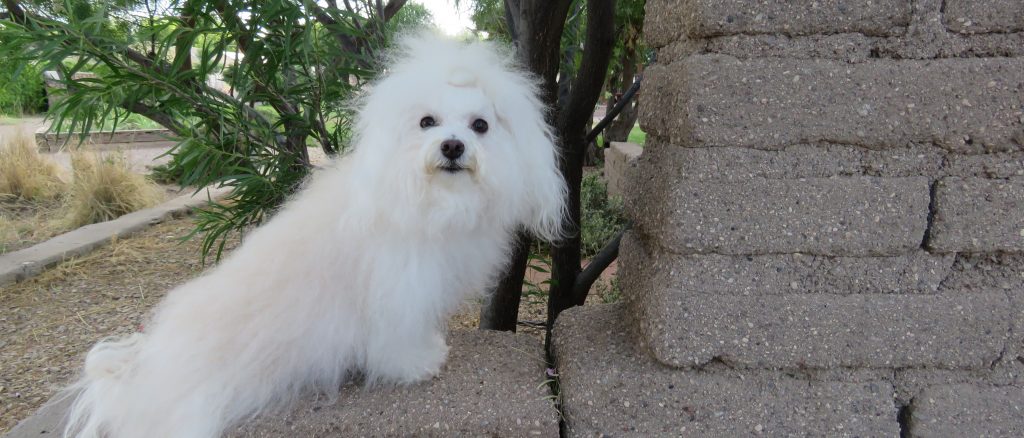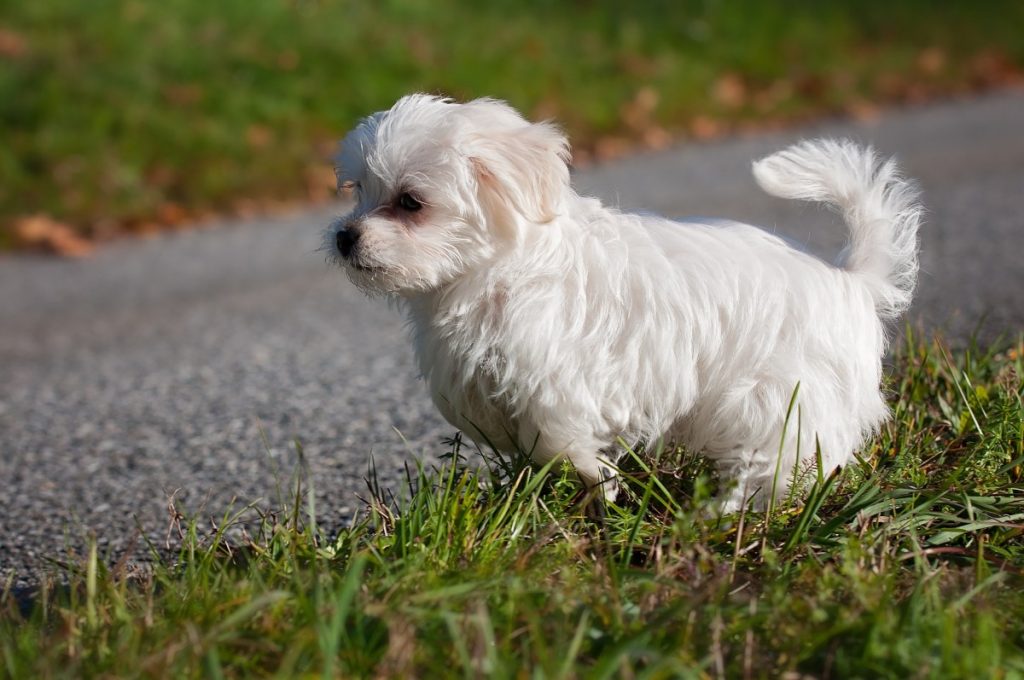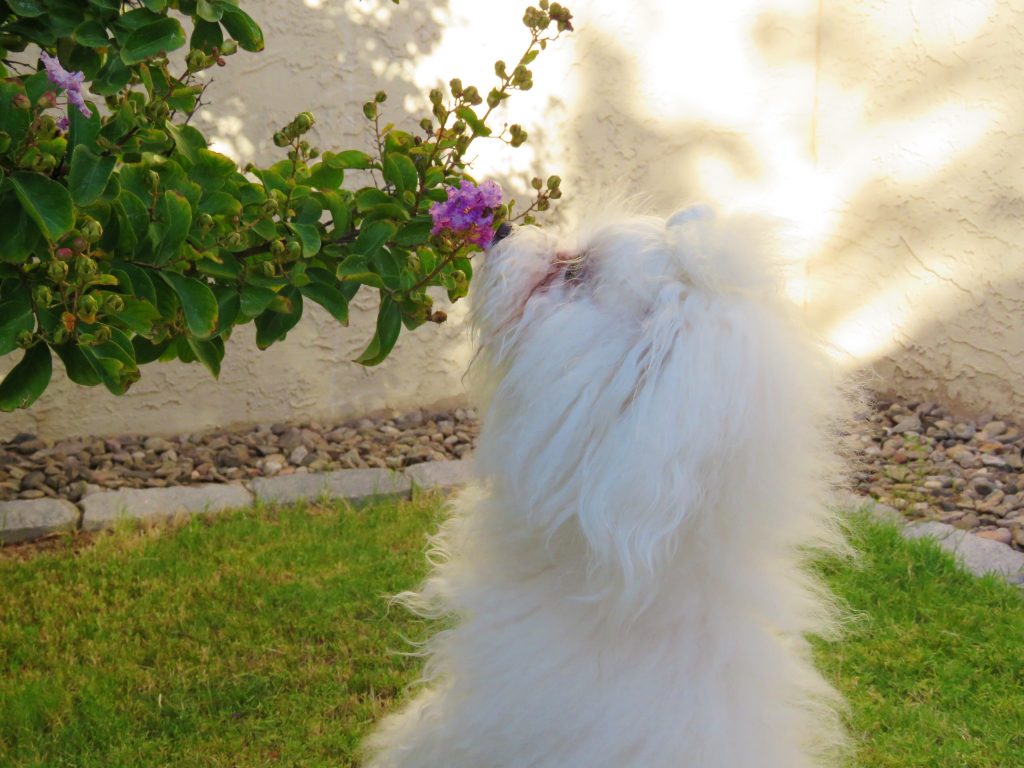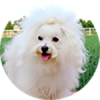
Bolognese Breed Overview
The Bolognese belongs to the companion and toy breed group. It is a small to tiny breed. It stands between 9-11 inches tall and weighs between 5.5 -9 pounds. Classified by the FCI as group 9 section1 , they are small, stocky and square built. This makes them less delicate than other dogs of similar size. They have a little black button nose, and dark almond eyes that speak right to your heart. The ears are set high and are long and hanging, but rigid at the base. The tail is carried curved over the back.

Bolognese Coat
The coat is one of the most important features. They have a long white curly distinctive single coat that has no undercoat. It falls in loose open ringlets/flocks all over the body, with shorter hair on the face. The Bolognese do not seasonally shed as other dogs. Their hair is similar to human hair. The hair’s texture is wooly, as opposed to silky. The hair sheds very little, but if the coat is kept long it requires a daily brushing to keep from matting. Many people choose to keep a shorter puppy cut.
The Bolognese often appears on lists of dogs that allegedly do not shed. It is true that these dogs do not seasonally moult or lose large amounts of fur as many other breeds do. However, they do eventually lose and replace individual hairs, similar to human hair growth cycles. The length of time of the growing and shedding cycle varies by age and other factors. There is no such thing as a completely non-shedding breed.
Bolognese Traits

Characteristic traits of the Bolognese include: playful, easygoing, earnest, willing, intelligent and loyal. Bolognese are not hyperactive and are normally more reserved.
This breed has a peaceful demeanor and are not incessant barkers. They are not aggressive and are very sociable with other pets. They do well in limited space and love to take naps!
The Bolognese is very responsive to obedience training. They are highly intelligent, quick to learn, and easy to train. A Bolognese will quickly train to potty pads and a bell-ringing notification system for taking potty breaks outside.
Bolognese are easy to train, but soon become bored by numerous repetitive drills. They thrive on variety, so it is best to change or expand activities to keep them happily engaged and thinking. These dogs respond well to positive reinforcement, gentle training methods and consistency, but do not respond well to shouting or harshness.

Bolognese Temperament
The Bolognese have been bred for centuries for only one purpose, to be a devoted loving companion to people. These dogs live for your attention and affection, and they form a close relationship with their owner. Bolognese are best suited for someone who can spend time with them. They are eager to please and love to be in your lap, by your side or nestled in your arms. This breed loves to go with you wherever you go and makes wonderful traveling companions. Going for a hike, running errands, or just hanging out, their favorite place to be is by your side.
While Bolognese are perfectly happy to lounge around the house, they should also have a daily walk. A suitable walk would be around 20–25 minutes a couple of times a day, or substitute 10-minute walks a few times a day.
The Bolognese are faithful easy going little dogs that love to play. They are known to dance around on their hind legs and do what is called the Bolo dance. These dogs love to play hide and seek, fetch and tug of war.
They make excellent companions for seniors, they love children and make great therapy dogs.
Bolognese Health
The average life-span of the Bolognese is 14 years. They are known to still act puppy-like at 10 years of age and are able to maintain aspects of youthfulness throughout their lives. They are typically active well into their senior years.
Bolognese are typically a healthy breed and are not prone to any major problems.
